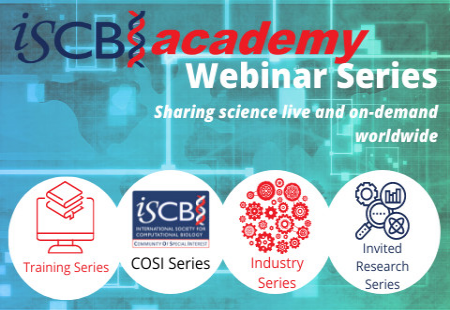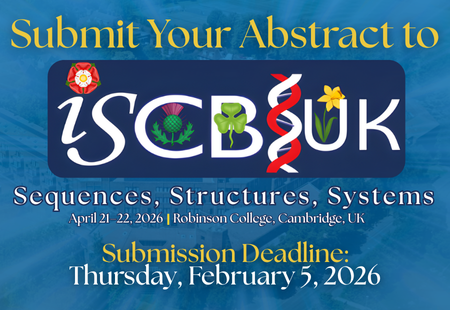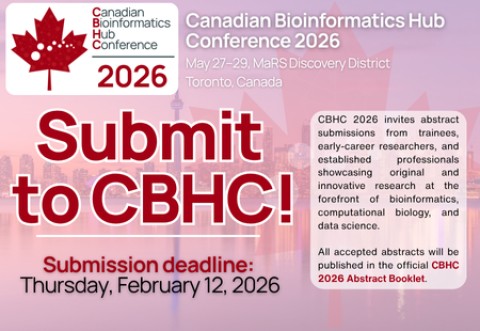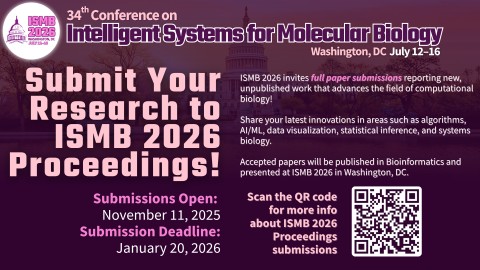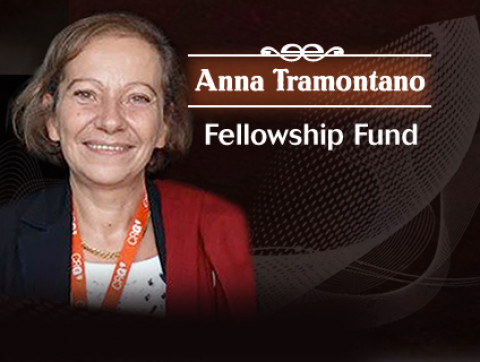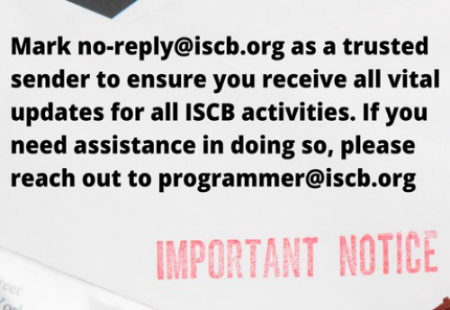FASEB Washington Update - May 17, 2011
COALITION FOR NATIONAL SCIENCE FUNDING HOSTS CAPITOL HILL EXHIBITION TO SHOWCASE NSF RESEARCH
Posted on: 05/17/2011
On May 11th, the Coalition for National Science Funding (CNSF) held an exhibition and reception, STEM Research and Education: Underpinning American Innovation, for Congressional members and staff. During the exhibition, approximately 30 institutions and scientific organizations presented posters describing science, engineering, and mathematics research and education projects supported by the National Science Foundation (NSF). The event attracted approximately 285 attendees including House Appropriations Commerce, Justice, Science Subcommittee Ranking Member Chaka Fattah (D-PA), Representatives Rush Holt (D-NJ), Phil Roe (R-TN), Jerry McNerney (D-CA), and Glenn Thompson (R-PA). NSF Senior Advisor Dr. Cora Marrett also attended. 2011 marks the 17th year CNSF has hosted a Capitol Hill exhibition and reception in support of NSF research.
CNSF is an alliance of over 100 organizations, including the Federation of American Societies for Experimental Biology, united by a concern for the future vitality of the national science, mathematics, and engineering enterprise. The coalition supports the goal of increasing the national investment in NSF’s research and education programs in response to the unprecedented scientific, technological, and economic opportunities facing the United States.
MEMBERS NAMED TO IOM COMMITTEE TO ADDRESS THE NEED FOR CHIMPANZEES IN BIOMEDICAL RESEARCH
Posted on: 05/17/2011
The Institute of Medicine (IOM) released the names of those who will make up the committee to study the current and future need of chimpanzees in biomedical and behavior research. Dr. John D. Stobo, Senior Vice President for Health Sciences and Services for the University of California, will serve as committee chair. Other members of the committee are John Bartlett, H. Russell Bernard, Floyd Bloom, Warner Greene, Diane Griffin, Ed Harlow, Jeffrey Kahn, Jay Kaplan, Margaret Landi, Alan Leshner, Leticia Medina, Frederick Murphy, Robert Sapolsky, and Sharon Terry. Drs. Bartlett, Bloom, Green, Griffin, and Ms. Terry are constituents of one or more FASEB societies.
Shortly after the committee membership was announced, IOM invited FASEB to speak at the first of its three scheduled meetings. Dr. Kevin Kregel, Professor of Integrative Physiology and Radiation Oncology at the University of Iowa and FASEB Animals in Research and Education Issues Subcommittee chair, will represent FASEB during the panel discussion. Dr. Kregel has led FASEB’s efforts to educate the public and policy makers about the contribution animals make to biomedical research. He will be joined by John Pippin of Physicians Committee for Responsible Medicine and Jarrod Bailey from the New England Anti-Vivisection Society. Panel members will deliver ten minutes of prepared remarks followed by 30 minutes of questions from the IOM committee during the public portion of the May 26, 2011 meeting.
NHGRI ORGANIZES HEALTH IT CONFERENCE
Posted on: 05/17/2011
On April 27th, the National Human Genome Research Institute (NHGRI) convened a conference entitled, “Genomics and Health Information Technology Systems: Exploring the Issues.” The meeting brought together leaders from the National Institutes of Health, genomics researchers, and experts from the electronic health record (EHR) sector for two days to discuss the opportunities and challenges of integrating genomics information into EHR systems. Among the presenters was FASEB Research Information Technology Subcommittee member Dr. Marc Williams of Intermountain Healthcare. As part of opening program, NHGRI Director Dr. Eric Green highlighted the emergence of personalized medicine, the growing prevalence of genetic testing, and the potential rich data source that EHR’s represent as reasons why the genomics research community needs to be engaged in this discussion.
Dr. Charles Friedman, Chief Scientific Officer of the Office of the National Coordinator (ONC) for Health Information Technology, spoke about the rollout of the federal government’s health informatics program. As EHR adoption moves forward, Friedman urged the EHR and research communities to work together to develop shared goals. He reported that the use of EHRs has risen to 25-30 percent among physicians and 20 percent among hospitals. Further, Dr. Friedman reported that 41 percent of office-based physicians intend to apply for Meaningful Use incentive payments from the Centers for Medicare and Medicaid Services (Meaningful Use “defines the minimum requirements that providers must meet through their use of certified EHR technology in order to qualify for the payments”). He estimated 80 percent physician adoption by 2019. Since the NHGRI conference, ONC has released its plan for the development of EHR-related standards which would be based upon the policy priorities that are currently being set.
Session moderator Dr. Teri Manolio of NHGRI spoke of the enormous research opportunities presented by EHR data and how many academic health centers are connecting EHR’s and biorepositories. She went on to describe the success of the eMERGE (Electronic Medical Records and Genomics) program, which was organized by NHGRI, with additional funding from the National Institute of General Medical Sciences, to develop, disseminate, and apply methodologies for conducting EHR-based, genomics research. Supporting Dr. Manolio’s claim were several presentations by investigators of the eMERGE program and other researchers from across the country.
The need for increased EHR adoption and improved patient access was articulated by Dr. Thomas Lehner of the National Institute of Mental Health. There are currently over 600 EHR products in use in the United States. Dr. Mark Hoffman, of EHR vendor Cerner Corporation, described each EHR as a composite product of multiple parties, with specific modules for laboratory services, medical charts, radiology, and other facets of healthcare delivery. He also spoke about the continuum of EHR’s, which range from off-the-shelf commercial to custom products, and the challenge that this presents for standardization. However, Dr. Hoffman was optimistic that currently established Meaningful Use incentives would be an important driver of EHR standardization. Independent of the actual EHR, several speakers highlighted the complexities of interpreting genomic data. For example, describing each genome as a new test, Dr. Debra Leonard of the Weill Cornell Medical College, cautioned that methods may be standardized but not the interpretation of the data. The human genome has about four million genetic variants. This makes the integration of specific individual genomic variation into a systems-level clinical interpretation a daunting task, but one that has the potential to dramatically improve patient care. To view the conference agenda and speaker presentations, click here.
NATIONAL SCIENCE FOUNDATION HOSTS SCIENCE BOARD MEETING; RELEASES STRATEGIC PLAN
Posted on: 05/17/2011
On May 10th and 11th, the National Science Board (NSB) held one of five annual meetings to receive updates from its standing committees and discuss issues relevant to the direction of the National Science Foundation (NSF).
The Board’s Task Force on Merit Review described results of its recent evaluation of NSF intellectual merit and broader impacts review criteria. Although NSB members acknowledged that further analysis of the criteria would be beneficial, the Board agreed to provide guiding principles to the NSF Director, who is required by the America COMPETES Reauthorization Act of 2010 to submit to Congress a development and implementation plan for the broader impacts criterion by the end of June.
The NSB Task Force on Data Policies and an internal NSF working group are proceeding cautiously as they consider policies to minimize barriers to data access. Both groups rejected a one-size-fits-all approach and recognized the potential economic implications of open access policies for publishers and scientific societies.
A session on the NSF budget included an overview of the final fiscal year (FY) 2011 continuing resolution. NSF anticipates that the most challenging of the FY 2011 budget reductions to manage will be those affecting Major Research Equipment and Facilities Construction projects.
Other items on the meeting agenda included presentations by recent NSB Honorary Award Recipients, a review of draft chapters of NSB’s 2012 Science and Engineering Indicators report, an update from the Task Force on Unsolicited Mid-Scale Research, and strategic planning for the NSF education portfolio. The next NSB meeting is scheduled for July 28th and 29th.
Also last week, the NSF released a new five-year strategic plan which will guide the agency’s priorities and investments.Entitled Empowering the Nation Through Discovery and Innovation: NSF Strategic Plan for Fiscal Years 2011-2016, it outlines three goals which aim to transform scientific frontiers, innovate for society, and achieve operational excellence at the agency. The document also describes a role for NSF in assessing the impact of scientific research, citing NSF’s involvement in the multiagency Science and Technology for America's Reinvestment: Measuring the Effect of Research on Innovation, Competitiveness and Science initiative as one example.
NIH ANNOUNCES RESEARCH WORKFORCE WORKING GROUP MEMBERS
Posted on: 05/17/2011
The National Institutes of Health (NIH) recently named the members of the working group charged with creating a model for building a sustainable and diverse biomedical research workforce. Development of the model is intended to help inform decisions about how to train the optimal number of people for the appropriate types of positions that will advance science and promote health. Established at the last meeting of the NIH Advisory Committee to the Director, the group is chaired by Princeton University President Dr. Shirley Tilghman. Among the questions it will consider are:
- What is the right size of the workforce?
- What are the appropriate types of positions that should be supported to allow people to have successful careers and to continue to advance biomedical and behavioral sciences?
- What is the best way to support these various positions?
- What types of training should be provided?
The group will utilize information from NIH and other sources and gather input from students, postdocs, investigators, scientific societies, and grantee institutions to develop the model. A list of working group members is available here.
FASEB URGES LAWMAKERS TO OPPOSE GREAT APE PROTECTION AND COST SAVINGS ACT
Posted on: 05/17/2011
On Thursday, May 12, the Federation of American Societies for Experimental Biology (FASEB) sent letters to all members of Congress urging them to oppose the Great Ape Protection and Cost Savings Act (GAPCSA). This billwould ban invasive research involving bonobos, gorillas, gibbons, orangutans, and chimpanzees based in part on the questionable premise that doing so would save money. The term invasive is defined in such a way as to preclude the use of these animals in nearly any biomedical research application. Despite the small number of great apes used in biomedical research, their role is extremely valuable. Chimpanzees remain the only valid research model for studying chronic hepatitis C and for the development and safety testing of life-saving monoclonal antibodies. Not only is research on great apes important for human health, it has impacts on the health of endangered, wild apes, which are affected by diseases such as Ebola and influenza. In the FASEB letter, President Dr. William Talman pointed out that, "If adopted, this bill will not only prohibit needed research for human diseases, but it will prevent research on behalf of these animals—inevitably harming the ones the legislation seeks to protect."
FASEB members appreciate the need to reduce the numbers of animals used in biomedical research. The use of chimpanzees is highly regulated to ensure that they are absolutely necessary for the work proposed, as few animals as possible are used, and they are treated humanely. This legislation, however, goes too far by completely eliminating the use of great apes. Since the Institute of Medicine is in the process of assessing the current and future need of chimpanzees in biomedical and behavioral research (see related article in this newsletter), enacting this legislation would be premature and would inhibit medical advances and the quest to improve human and animal health through new treatments and vaccines. The FASEB letter concludes by urging members of Congress not to support GAPCSA.
NIH PREVAILS IN EMBRYONIC STEM CELL APPEAL
Posted on: 05/17/2011
The United States Court of Appeals for the D.C. Circuit ruled that the National Institutes of Health (NIH) could continue to fund human embryonic stem cell research (hESC) pending the resolution of a lawsuit in the U.S. District Court for the District of Columbia. The 2-1 decision handed down on April 29, 2011 lifted a preliminary injunction issued by District Court Judge Royce C. Lamberth that had blocked NIH from funding hESC research until Judge Lamberth ruled on whether such support violates federal law.
Plaintiffs James L. Sherley and Theresa Deisher argued that federal support for hESC research violates the Dickey-Wicker amendment, a provision attached annually to the Labor, Health and Human Services appropriations bill, that prohibits research resulting in the destruction of human embryos. They also made the case that NIH’s decision to award hESC grants puts them at a competitive disadvantage in acquiring funding for their work on adult stem cells. The task before the Court of Appeals was not to rule on the merits of the case, but rather to decide if there were grounds to halt NIH funding for hESC research until the District Court issued its final decision. In overturning the preliminary injunction, the court majority concluded that the plaintiffs were unlikely to succeed on the merits of their case. They stated that Dickey-Wicker is ambiguous and deemed it reasonable for NIH “to have concluded that, although Dickey-Wicker bars funding for the destructive act of deriving an ESC from an embryo, it does not prohibit funding a research project in which an ESC will be used.” The majority also stated that the balance of harms that would result from prohibiting hESC research is in NIH’s favor. A preliminary injunction would impose "certain and substantial” hardships on hESC researchers insofar as it would preclude NIH from funding new hESC projects, bar further disbursements to hESC scientists who have research in progress, result in a loss of investment in project planning and equipment expenditures, and lead to job losses for research staff. In contrast, they noted that it is "uncertain whether invalidating the [NIH stem cell] Guidelines would result in plaintiffs getting any more grant money.” The District Court has yet to rule on the merits of the case. Whichever way the court decides, additional appeals are expected.

